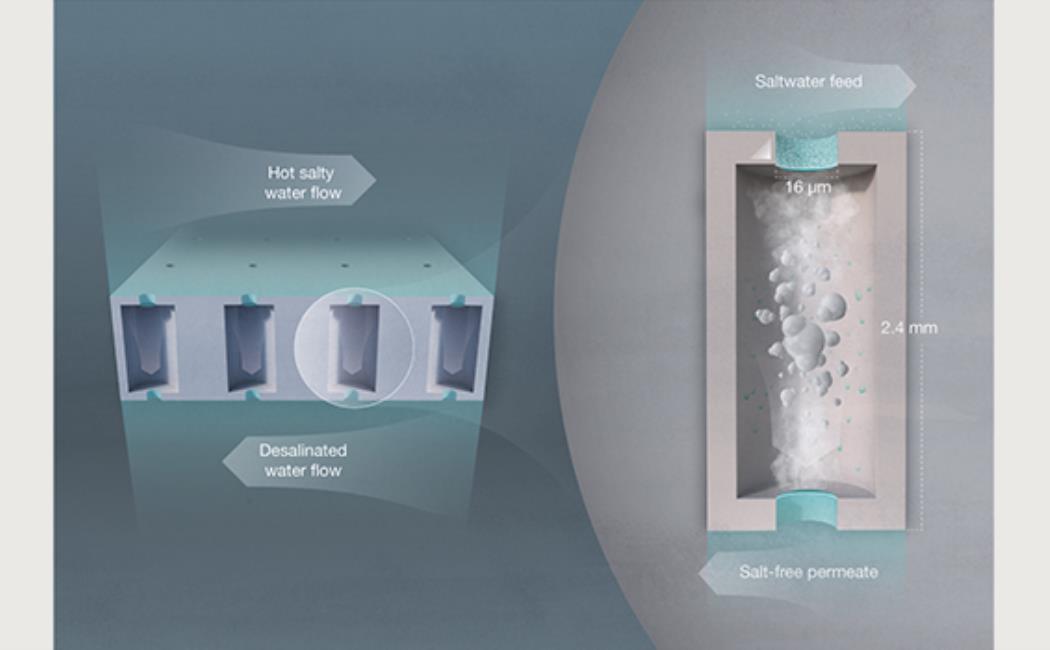
Insects inspire greener, cheaper membranes for desalination
28 June, 2019
A new membrane made from water-wet materials has specially designed gas-entrapping pores that allow it to simultaneously separate hot, salty from cool, pure water while facilitating the transfer of pure vapor from one side to the other. This principle, designed by KAUST researchers, could lead to greener, cheaper desalination membranes.
Currently, super-water-repellent perfluorocarbon membranes are popularly used for a desalination process known as membrane distillation (MD). But perfluorocarbons are expensive, nonbiodegradable and vulnerable to fouling and damage at higher temperatures, explains KAUST postdoctoral fellow Ratul Das.
Click here to read the full story
Image: The membrane’s pores entrap air upon immersion in water, separating the liquids on either side and allowing the transport of only pure water vapour from the hot to the cold side.
© 2019 Ivan Gromicho